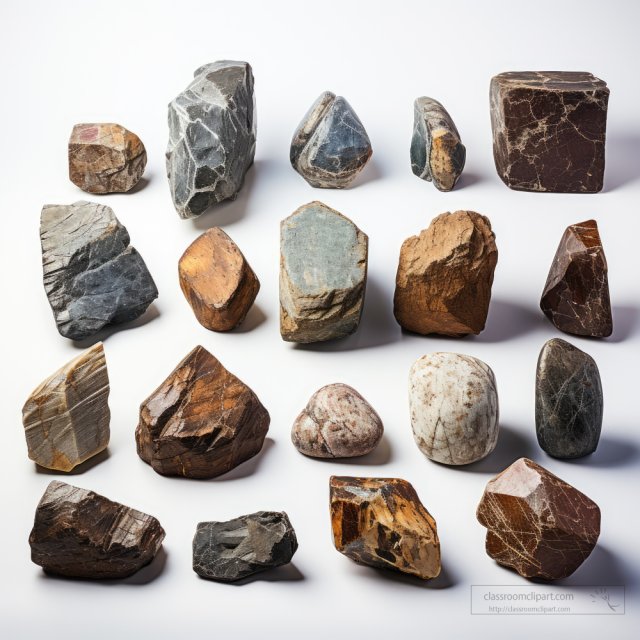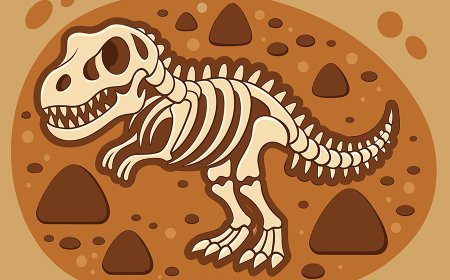Rocks for Students | Types and Rock Cycle Guide
Learn about rocks the solid materials that make up Earth discover igneous sedimentary and metamorphic rocks their properties and the rock cycle in earth science

🌟 Introduction
Rocks are the solid building blocks of Earth. Everywhere you look-mountains, beaches, deserts, or your own backyard-you'll see rocks. They are made of one or more minerals, and they form the foundation of our planet's crust. Rocks aren't all the same; they come in different colors, textures, and hardness levels depending on how they were formed. Scientists divide rocks into three main groups: igneous, sedimentary, and metamorphic. Together, these rocks constantly change in a natural recycling system called the rock cycle. Understanding rocks helps us learn Earth's history, discover resources, and see how our planet changes over time.
🔍 What are Rocks?
Rocks are natural, solid materials made of one or more minerals. They are classified into three main types:
-
Igneous Rocks: Formed from cooled magma or lava. Example: granite, basalt.
-
Sedimentary Rocks: Formed from compressed layers of sand, mud, or fossils. Example: sandstone, limestone.
-
Metamorphic Rocks: Formed when other rocks change under heat and pressure. Example: marble, slate.
🌍 Why are Rocks Important?
-
Earth's Story: Rocks record history, including fossils and past environments.
-
Resources: They provide metals, fuel, building materials, and soil nutrients.
-
Construction: Granite, limestone, and sandstone are used in buildings and roads.
-
Science: Rocks reveal how Earth formed and continues to change.
🧪 Everyday Examples
-
Granite is used in countertops and buildings.
-
Limestone makes cement and is used in roads.
-
Coal, a sedimentary rock, has been a major source of energy.
-
Marble is used for sculptures and monuments.
-
Sandstone often makes up playground sand and natural cliffs.
✨ Fun Facts
-
The Grand Canyon shows millions of years of sedimentary rock layers.
-
Pumice, an igneous rock, is so light it can float on water.
-
Diamonds are found in volcanic rocks deep in the Earth.
-
Rocks from the Moon and Mars have been studied to compare with Earth's.
📌 Key Takeaways
-
Rocks are made of minerals and form Earth's crust.
-
Three main types: igneous, sedimentary, metamorphic.
-
Rocks are part of the never-ending rock cycle.
-
Humans depend on rocks for resources, buildings, and tools.
🐾 Kid-Friendly Summary
Rocks are Earth's building blocks. They can form from lava, sand layers, or by changing shape under pressure. Every rock tells part of Earth's story.
📚 Vocabulary Words
-
Igneous Rock: Rock formed from cooled magma or lava.
-
Sedimentary Rock: Rock made from layers of compressed sediments.
-
Metamorphic Rock: Rock changed by heat and pressure.
-
Mineral: Natural substance that makes up rocks.
-
Fossil: Preserved remains of plants or animals in rocks.
-
Rock Cycle: Process of rocks forming, breaking, and changing.
-
Weathering: Breaking down rocks into smaller pieces.
-
Erosion: Moving rock pieces by water, wind, or ice.
-
Magma: Molten rock beneath Earth's surface.
-
Crust: Earth's thin outer layer made of rocks.
🧠 Interactive Quiz on Rocks
- Rocks are made of
A. Water
B. Minerals
C. Air
D. Plants - Which rock forms from cooled magma or lava?
A. Sandstone
B. Granite
C. Marble
D. Coal - Sedimentary rocks are often formed in
A. Rivers and oceans
B. Volcanoes
C. Deep space
D. Earth’s core - Which is a metamorphic rock?
A. Slate
B. Sandstone
C. Basalt
D. Shale - The rock cycle shows
A. Rocks never change
B. How rocks form, break down, and change
C. Only volcanoes
D. Only fossils


















































